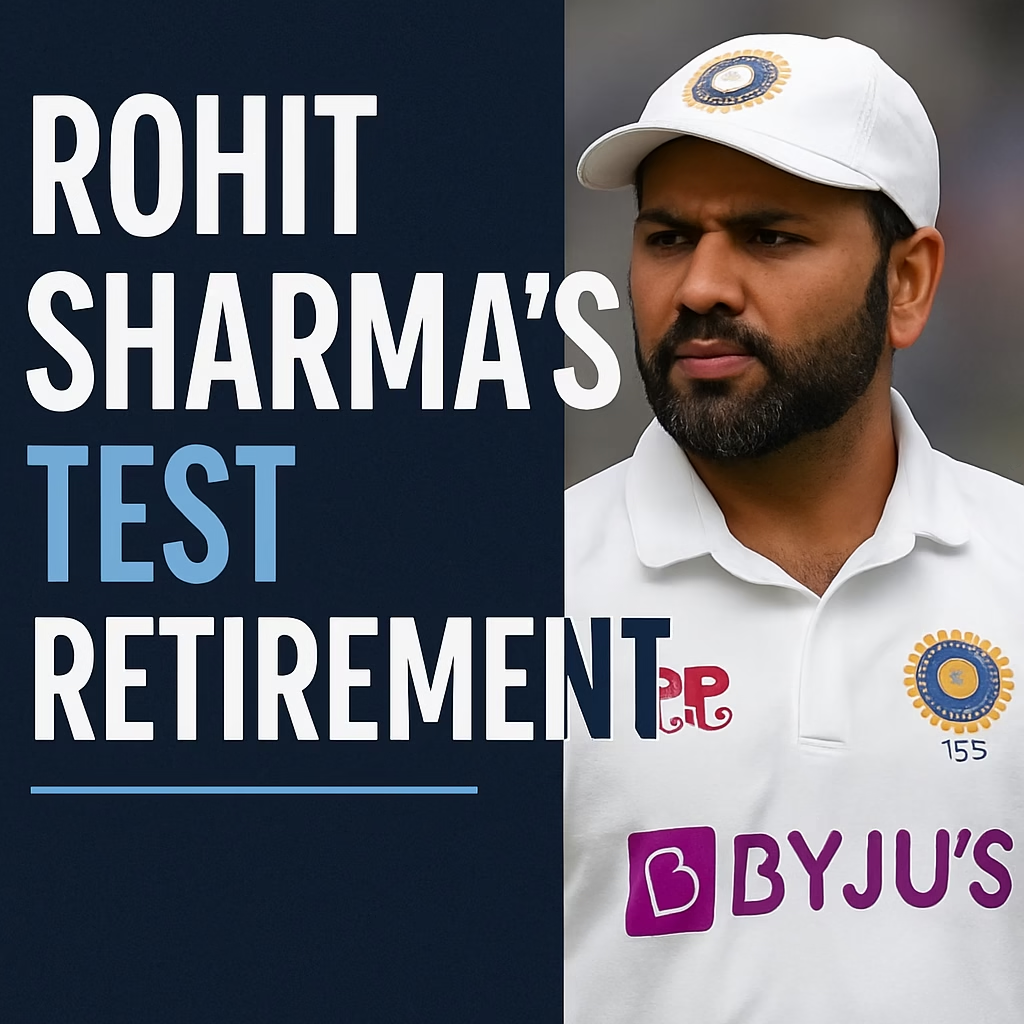Meta Description: Rohit Sharma’s Test retirement is a turning point for Indian cricket. Explore why he retired, his achievements, and what this means for Team India.
A Farewell from the Hitman
Rohit Sharma’s announcement to retire from Test cricket in May 2025 sent a wave of emotion across the cricketing world. Known for his explosive starts and serene strokeplay, Rohit’s final bow from the red-ball format marks the end of an illustrious journey that redefined opening batsmanship in Tests for India.
Having debuted in 2013 against the West Indies, Rohit amassed over 4,200 runs in 58 Tests at an average of 46.41, including 13 centuries. His transformation into a dependable Test opener at the age of 32 was one of the most inspiring stories in modern-day cricket.
Why Did Rohit Sharma Retire from Test Cricket?
According to BCCI insiders and chief selector Ajit Agarkar, Rohit Sharma made his retirement decision in consultation with the board, expressing a desire to focus on limited-overs formats and groom the next generation of cricketers. Sharma, who also captained the Test side in recent years, felt it was the right time to step aside and allow younger players more opportunities.
The physical demands of Test cricket, especially for a senior player managing multiple formats, contributed to his decision. Sharma reportedly expressed a desire to extend his career in ODIs and T20s, where he continues to be a key asset for Team India.
Rohit Sharma’s Legacy in Test Cricket
Rohit Sharma’s Test legacy cannot be measured by numbers alone. From scoring centuries in his first two innings to dominating world-class bowling attacks at home and abroad, Rohit reinvented himself multiple times.
One of his most remarkable innings came in 2019 against South Africa, where he scored 176 and 127 in a single match, proving his credentials as a Test opener. His leadership too was commendable; under his captaincy, India maintained their top ICC Test ranking and nearly clinched the World Test Championship.
Rohit brought composure, tactical sharpness, and a team-first mindset to the game, often playing through pain and fatigue to put the team ahead.
Global Reactions and Tributes
Tributes poured in from around the globe following his announcement. Cricket legends like Sachin Tendulkar, Brian Lara, and Michael Vaughan lauded Sharma for his impact in Test cricket.
Teammates and current players praised his calm leadership and his ability to inspire youngsters. Jasprit Bumrah and Ravindra Jadeja, in particular, credited Rohit for backing bowlers and allowing them to express themselves freely on the field.
Even Virat Kohli took to social media to express heartfelt admiration, highlighting the camaraderie they shared in India’s golden years of Test cricket.
What This Means for Team India
With the simultaneous retirement of both Virat Kohli and Rohit Sharma from Tests, Indian cricket is entering a transitional phase. The BCCI has already named Shubman Gill as the new Test captain and Rishabh Pant as vice-captain.
This change presents both challenges and opportunities. The team will need to rebuild its batting lineup, invest in new opening combinations, and develop a strong core to maintain India’s Test supremacy.
Players like Yashasvi Jaiswal, Abhimanyu Easwaran, and Sarfaraz Khan are seen as potential successors, and much will depend on their adaptation and performance in the five-Test series against England later this year.
Conclusion
Rohit Sharma’s Test retirement is more than just a personal milestone; it’s a cultural shift in Indian cricket. His journey from middle-order batsman to one of the most reliable openers in the world stands as a testament to resilience, skill, and evolution.
Though he bids goodbye to Test cricket, his influence will resonate for years. Rohit leaves behind a legacy of grit, elegance, and leadership—an inspiration for every aspiring cricketer.










